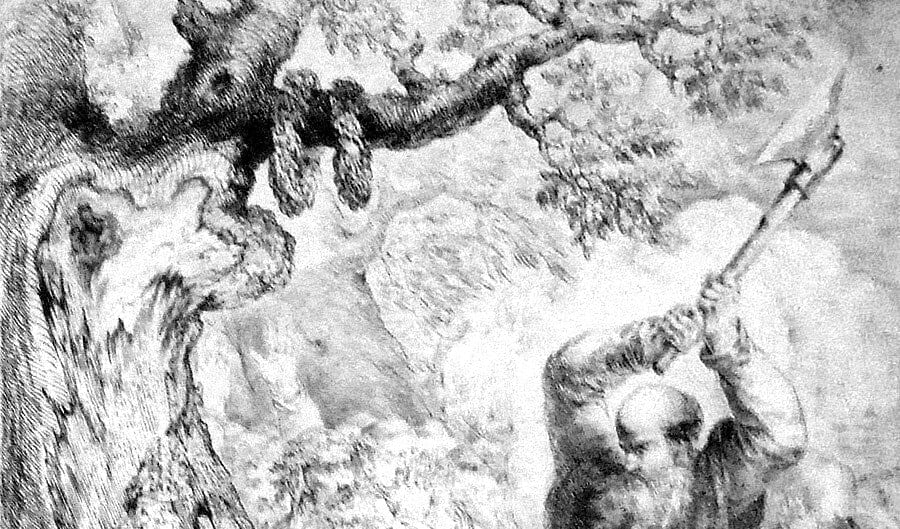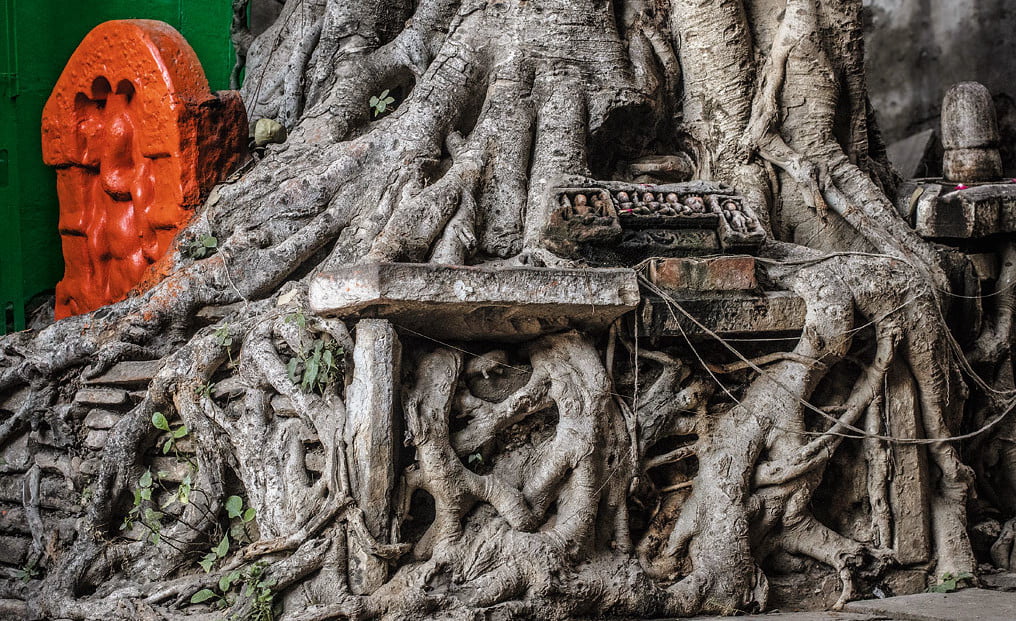The Maha Bodhi Tree, marks the location where the Buddha attained enlightenment, and is the destination for the Buddhism’s pilgrimage. Discover Myths and Legends of the ancient sacred fig tree at the Maha Bodhi Temple Complex at Bodh Gaya where Buddha sat for enlightenment under the Maha Bodhi Tree.
In this Article
Plastic waste is a omnipresent feature of the Indian landscape – the lining to every roadside, the shimmering surface of every garbage dump, the floater in every open drain. And there it was as usual, tangled in the edges and ditches of the lanes that lead to Sambodhi, Bodhimanda and Mahabodhi, as known through history, and today called Bodh Gaya, this is the holiest of the holy sites for Buddhists. It is located in southwestern Biha in northeastern India.
As we arrive after several hours on the bike, the main road to the temple complex is rather smelly, dusty and dirty – so are we.
A great number of vendors and beggars – many of them children – line the road and form a guard of honor for the tonsured monks clad in saffron, praying pilgrims and polite fascinated visitors.
This is the place where memory, landscape, story and history come together.
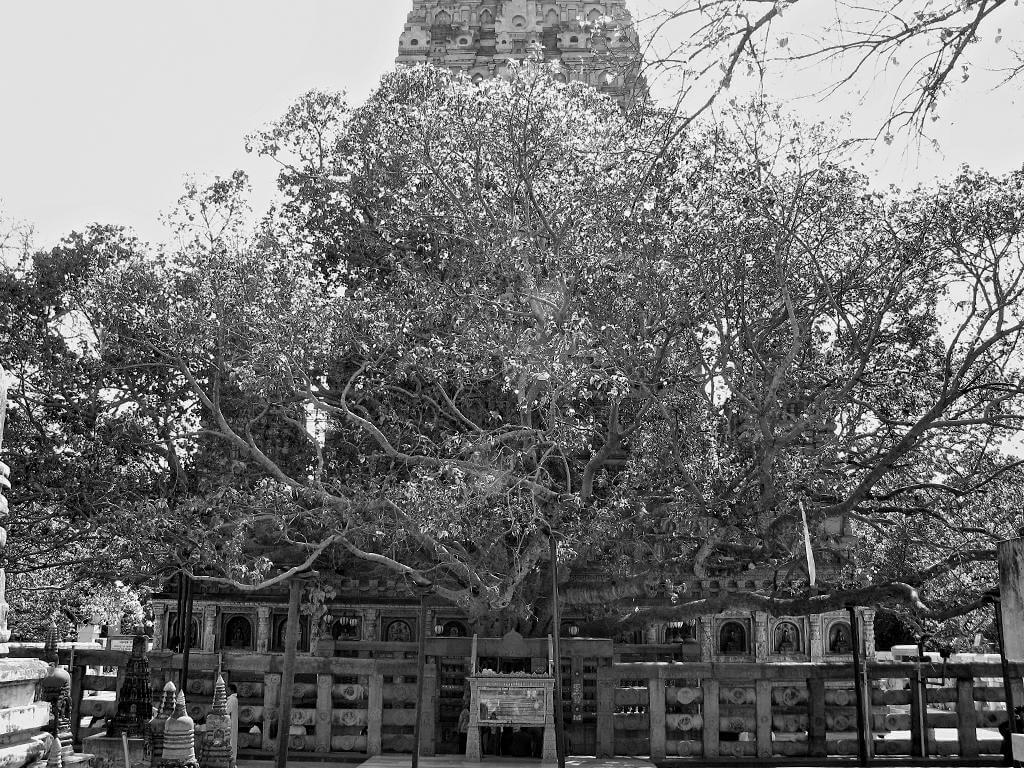
The Maha Bodhi Temple Complex
The Mahabodhi Temple Complex was inscribed on the UNESCO World Heritage List in 2002:
…as one of the four holy sites related to the life of the Lord Buddha, and particularly to the attainment of Enlightenment…
The most important of the sacred places is the giant Bodhi Tree, to the west of the main temple, a supposed direct descendant of the original Bodhi Tree under which Buddha spent his First Week and had his enlightenment…
BODH GAYA is where Buddha sat for enlightenment under the Maha Bodhi Tree
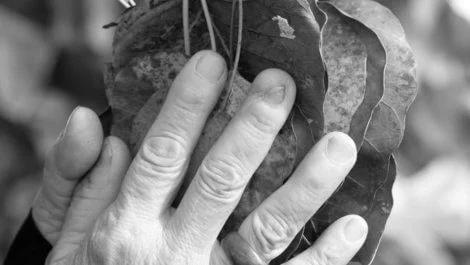
There has been scholarly controversy whether the proper name of the site is Bodh Gaya, after the famous Bo or Bodhi tree, or Buddha-Gaya, after Buddha.
Buddhists consider the tree sacred as Prince Siddhartha sat in meditation under this tree and found enlightenment. The fig tree or ficus religiosa since then is known as the Bo tree. Siddhartha came to be known as the Buddha.
Lord Buddha and the sacred Bodhi Tree
…The belief that Buddha had attained Enlightenment in this particular place has been confirmed by tradition and is now called Bodh Gaya… It has been documented since the time of Emperor Asoka who built the first temple in 260 B.C. when he came to this place to worship the Bodhi Tree, which still stands as witness to the event.
Next to the Bodhi Tree there is a platform attached to the main temple made of polished sandstone known as Vajrasana (the Diamond Throne), originally installed by Emperor Asoka to mark the spot where Buddha sat and meditated.
A sandstone balustrade once encircled this site under the Bodhi Tree, but only a few of the original pillars of the balustrade are still in situ; they contain carvings of sculpted human faces, animals, and decorative details.
Buddhist texts of both Theravadhan and Mahayanan traditions have clear reference of this event of Buddha’s enlightenment at Bodh Gaya…
~ https://whc.unesco.org/en/list/1056/
UNESCO TV Mahabodi Temple Complex © NHK Nippon Hoso Kyokai
MYTH – HISTORY : Siddhartha Gautam arrives at Bodhi Gaya
Buddhist accounts reveal the life of Siddhartha Gautam, who became the spiritual teacher, Buddha, once he attained enlightenment. Siddhartha was born in Lumbini (modern-day Nepal) as a prince in the royal house of the Shakya, with its capital at Kapilvastu. On seeing the suffering of the world he left his home in search of answers as to how to end these sufferings. This period in history, the 6th century B.C. is well known for the Mahajanapada that were well established over most of the Indian Subcontinent.
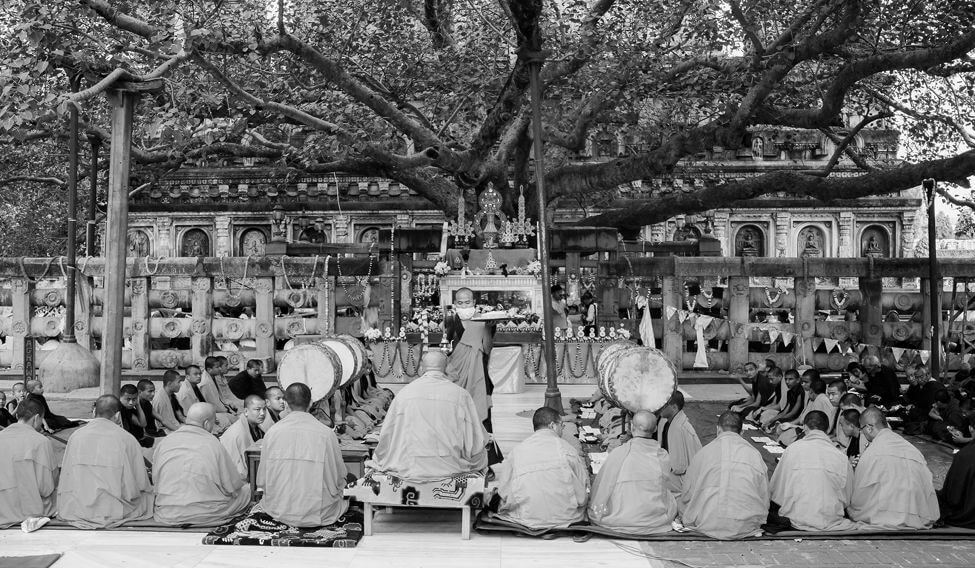
Sakyamuni Gautam is said to have roamed the areas of Rajgir (in Nalanda district) and Gaya in search of answers during the reign of Bimbisar.
After six years of fruitless striving after knowledge he had arrived in the village of Senanigama and found it “pleasantly picturesque”, as the scriptures say.
“Delightful is the sight of the grassy woodland. The Cher (now called Neranjara) is flowing on in a glassy stream, showing the bathing places with gradual descents of steps, presenting a charming landscape and affording glimpses of the neighboring hamlets, easy of access. This must needs be the fitting place for a scion of a noble race strenuously striving after the highest attainment.”
A Jataka has described the site as:
“It was a small silver-white sandy ridge around the Bo tree without a single blade of grass growing upon it. It was encircled by creepers with serpentine courses and surrounded by a grassy woodland with the lordly trees inclining all towards the Bo-tree that stood on the central spot.”
It was to this place that Gautama came resolved to attain final knowledge or die in the attempt.
“Let my skin, my nerves and bones waste away, let my life blood dry up, I will not abandon this posture until I have obtained perfect attainment.”
He sat down “cross-legged with his face turned towards the eastern quarter”.
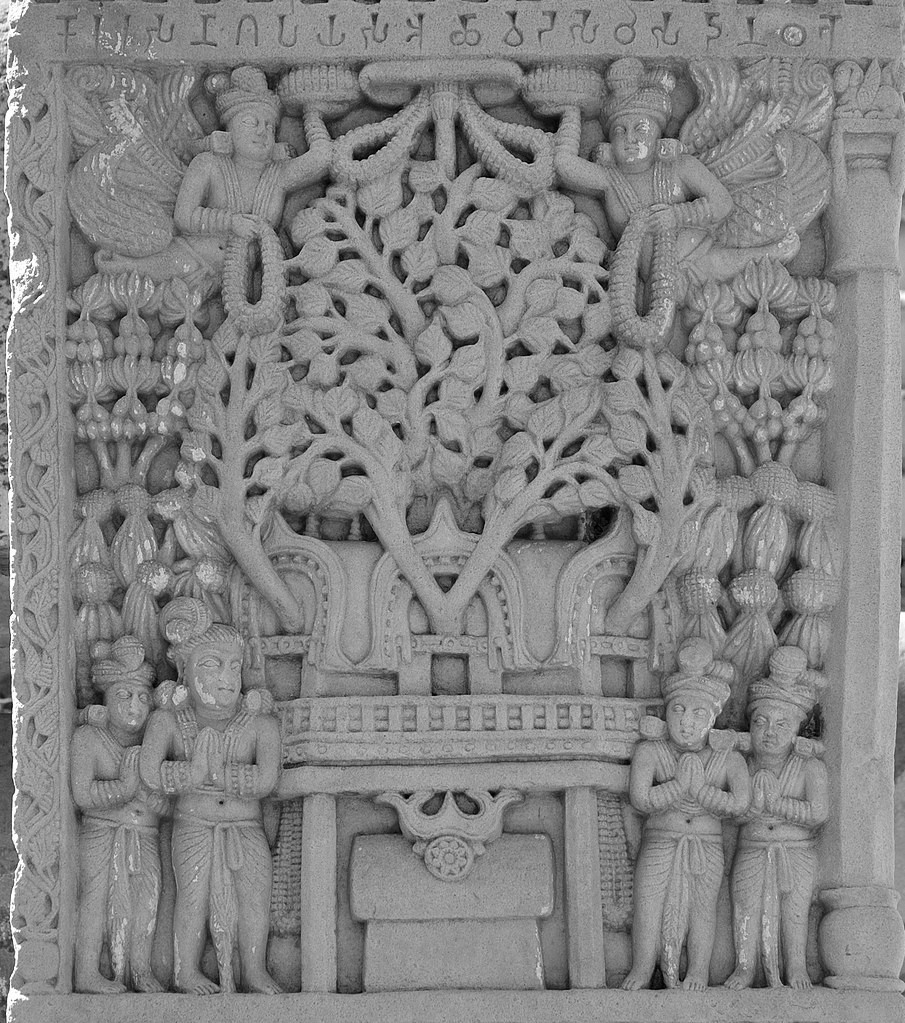
King Asokas visit in Bodh Gaya

Yet it was not until Asoka came to the throne two centuries after that the place did become a center of pilgrimage. The king made a pious tour to the site, however, he erected no structure there.
On a subsequent visit ten years later, he planted a column surmounted by the figure of a standing elephant.
The evidence for this is a relief in the Bharhut railing – the Stupa is dated to 100 BC.- where this pillar is depicted in front of the Bo tree. This Mahabodhi Temple is shown as circular and near the Bodhi Tree. The Vajrasana (seat for Buddha) is prominently placed in the centre.
The inscription between the Chaitya arches reads: “Bhagavato Sakamunino/ bodho” i.e. “The building round the Bodhi tree of the Holy Sakamuni (Shakyamuni)”
According to Hiuen-tsang, Asoka build a small Vihara (Buddhist monastery) in front of the tree later to be expanded.
Representations of the early temple structure that appears to protect the Bodhi Tree are also found on the Sanchi Stupa dated around 250 BC.
Fa Hien visited the site early in the fifth century A.D. writing, that “towers” were raised on eight spots. The first was where,
“having arrived at supreme wisdom, for seven days he (Buddha) sat contemplating the (Bo) tree, experiencing the joys of emancipation”.
The others were
“where he walked for seven days under the Bo tree, from east to west; where all the devas, having caused the appearance of a hall composed of the seven precious substances, for seven days paid religious worship to Buddha; where the blind dragon Muchilinda for seven days encircled Buddha in token of respect; also where Buddha, seated on a square stone beneath a Nyagrodha tree, and with his face to the east, received the respectful salutation of Brahma; also where the four heavenly kings respectfully offered him his alms bowl; also where the 500 merchants presented him with parched corn and honey; also where he converted the Kasyapas, elder and younger brothers, and their thousand disciples.”
Hiuen-tseng, who followed two centuries later, has a much fuller account, the pilgrim writes,
“To the east of the Bodhi tree there is a vihara about 160 or 170 feet high. Its lower foundation wall is 20 or more paces in its face. The building is of blue tiles (or bricks), covered with chunam (or burnt stone or lime); all the niches the different storeys hold golden figures. The four sides of the building are covered with wonderful ornamental work; in one place figures of stringed pearls, in another figures of heavenly Rishis. The whole is surrounded by a gilded copper fruit. The eastern face adjoins a storeyed pavilion, the projecting eaves of which rise one over the other to the height of three distinct chambers; its projecting eaves, its pillars, beams, doors and windows are decorated with gold and silver ornamental work, with pearls and gems let in to fill up interstices. Its sombre chambers and mysterious halls have doors in each of the three storeys.
“To the right and left of the outside gate are niches like chambers; in the left is a figure of Avalokitesvara Bodhisattva and in the right a figure of Maitreya Bodhisattva. They are made of white silver and are about 10 feet high.”
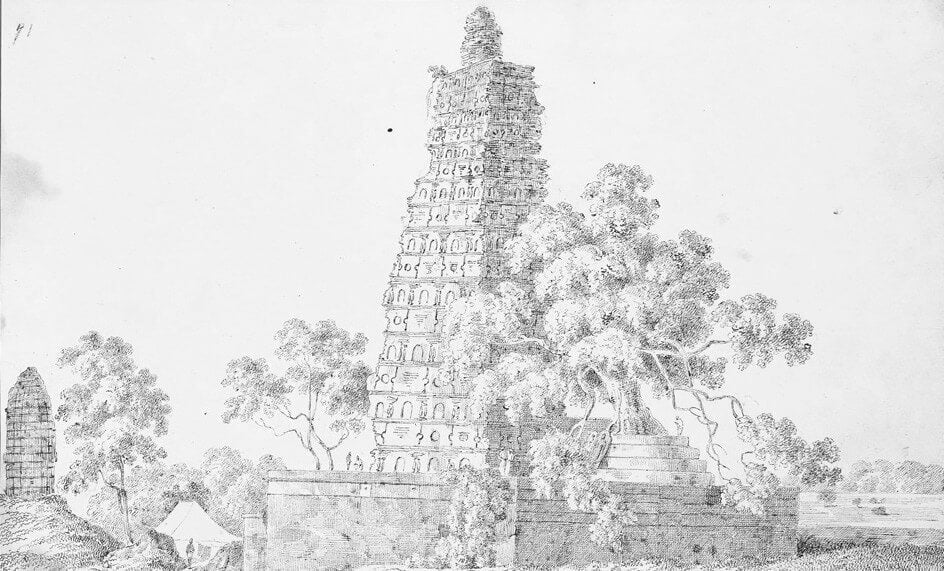
The 7th century Chinese Buddhist traveler Xuanzang called Bodhgaya
‘‘the centre of the Buddhist World”.
MYTH : BODHI GAYA – The Bodhi tree and Buddha’s enlightenment

The Maha Bodhi of Sri Lanka
Many sacred trees in India and other countries are originally raised from seeds brought from the ancient Bodh Gaya tree, that was destroyed in India, but survived in Sri Lanka.
“In Sri Lanka, there grows to this day, a tree, the oldest historical tree in the world which we know certainly to have been planted as a cutting from the Bodhi tree in the year 245 B.C.”
H.G. Wells
MYTH: Bhikkhuni Sanghamitta Bringing the Bodhi Tree Sapling to Sri Lanka
A shoot of the original Bodhi tree was taken to Sri Lanka in the 3rd century B.C. by Bhikkhuni Sangamitta, the daughter of Ashoka. The Lankan king Devanampiyatissa planted it at the Mahavihara monastery in Anuradhapura where it still flourishes today. Saplings from this tree are planted in Buddhist temples and monasteries worldwide.
The Sacred Jaya Sri Maha Bodhi in Anuradhapura planted in Sri Lanka in B.C. 228 is still alive and the seedlings are planted in Buddhist temples around earth.
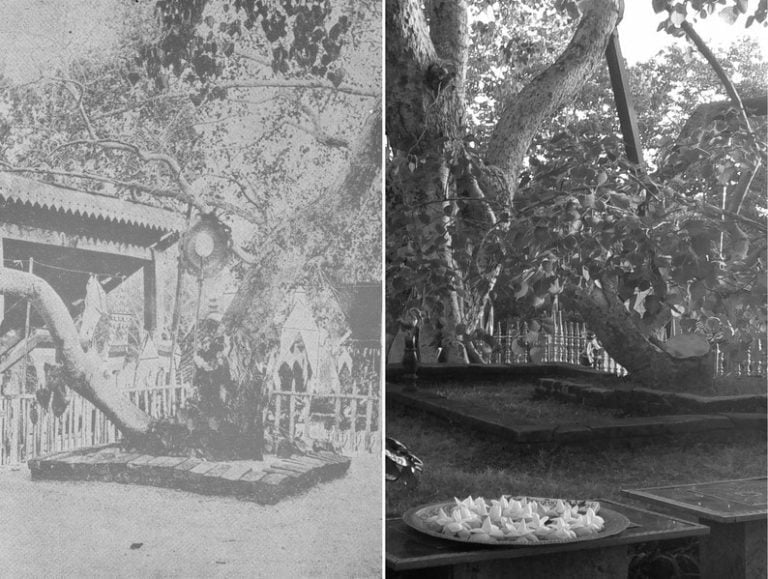
The present tree in Bodh Gaya is not the one where the Buddha meditated; The original tree was destroyed four times and has been replanted each time from a cut of the descendant of the original tree, which is currently growing in Sri Lanka.
In 1881, Alexander Cunningham of the Archaeological Survey of India planted a new tree, which stands here to date. This tree that spreads its branches over the chanting devotees also had a brush with death. It turned black and started dying a slow death because of the oil lamps that devotees lit at its base. It took years of frantic effort with expert supervision and international support to bring it back to life. The tree is now treated with affection and reverence; the trunk itself protected behind railings and sturdy iron poles set in the ground to gently support the weight of the aging branches.

Bodhi Pallanka – The Place of Enlightenment
It is around the Bodhi tree that all the religious activities take place. Monks wearing red, orange or maroon robes are seen in meditation or chanting with the 108 beaded mala all around the tree. Tourists throng this place. Despite the presence of so many people what is noteworthy is a sense of calm all around.
One day, as he was walking, he sat down under a peepal tree (the Bodhi tree – Ficus religiosa or Sacred Fig) and resolved not to get up from this place until he had found the enlightenment. He remained in meditation for 49 days without moving, leading several battles against the demon Mara (illusion).
MYTH: The battle against Mara
After many lifetimes of spiritual and intellectual preparation, the Buddha-to-be neared the achievement of Enlightenment, and thus of buddhahood, as he sat meditating under a tree. The demon Mara, an embodiment of death, violence, and uncontrolled passions, approached at the head of a monstrous army, intending to put a stop to the Enlightenment. Mara and the Buddha-to-be repeatedly challenged each other’s power and past accomplishments. Finally, the Buddha-to-be said,
Mara, who is witness to your having given donations?’ Said Mara, ‘All these,’ and he stretched out his hand in the direction of his army. Then Mara said, ‘Who is witness to your having given donations?’ The Buddha-to-be replied, ‘I have no animate witnesses present. However, the great 700-fold donation I gave in my immediately previous existence will be testified to by the solid earth.’ And drawing forth his right hand from beneath his priestly robe, he stretched it out towards the mighty earth. And the mighty earth thundered, ‘I bear you witness’ with a hundred thousand roars. And the followers of Mara fled away in all directions.
~ Adapted from Henry Clark Warren’s 1896 translation of an ancient Buddhist text.
Soon, having overcome the negative forces represented by Mara, the Buddha-to-be attained full Enlightenment and became a Buddha on the night of the full moon of Wesak (May-June), at the age of 35-Buddha — the one who knows
Buddha — the one who knows
Spiritual awakening or enlightenment is described as a state of bliss and deep wisdom and happiness.
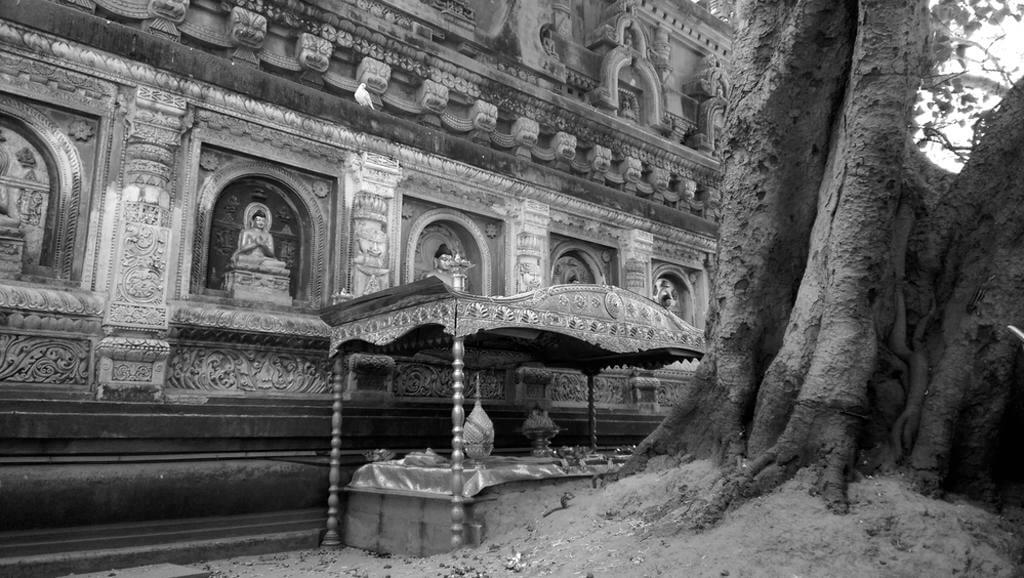
In the shade of the Bodhi Tree, protected behind bullet-proof glass and obscured from determined cameras is the Diamond Throne, or Vajrasana. Remarkably well-preserved, it is said to have been gifted by Asoka in 3rd century BC to mark the exact spot where Prince Siddhartha attained enlightenment.
According to the Jatakas, the navel of the earth lies at this spot, and no other place can support the weight of the Buddha’s attainment.
Another Buddhist tradition claims that when the world is destroyed at the end of a kalpa, the Bodhimanda is the last spot to disappear, and will be the first to appear when the world emerges into existence again.
Tradition also claims that a lotus will bloom there, and if a Buddha is born during that the new kalpa, the lotus flowers in accordance with the number of Buddhas expected to arise. According to legend, in the case of Gautama Buddha, a Bodhi tree sprang up on the day he was born.
MYTH: Sujata feeds Buddha at Bodh Gaya where Buddha sat for enlightenment under the Maha Bodhi Tree
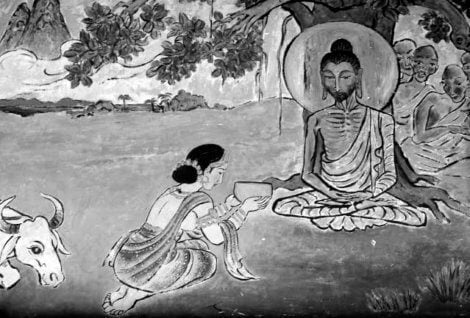
Bodhisattva broke his fast under the Bo tree after six years of rigid penance and austerities by accepting a bowl of rice-milk, Kheer, a sweet rice porridge offered by the daughter of the local chieftain, some say a milkmaid, Sujata.
~ Jataka and other stories of Buddha
Pali tradition believes that every Buddha was offered milk-rice from a maiden just before his Enlightenment. For example, Vipassi Buddha accepted the milk-rice from Daughter-of-Sudassana-Setthi; Sikhi Buddha accepted it from Daughter-of-Piyadassi-Setthi; Vessabhu Buddha accepted the milk-rice from Sirivaddhana; Kakusandha Buddha accepted the milk-rice from a brahmin girl Vajirindha of the village Suchirindha; Konagamana from a Brahmin woman Aggisoma; and Kassapa Buddha from his wife Sunanda. Last in the list is Gotama Buddha, who accepted the milk-rice from Sujata.Separating from the five monks with whom Gotama had undertaken several ascetic penances in Uruvela for the Enlightenment after having left his two gurus, namely, Alara Kalama and Uddaka Ramaputta, he sat under a Pipal tree called the Ajapala Nigrodha. As he felt that the extreme austerities for the spiritual achievement was not a necessary condition to realize the spiritual goal, the natural human drive for the normal human food once again became operative in him. His desire was, however, fulfilled by a woman named Sujata, who offered him the milk-rice.
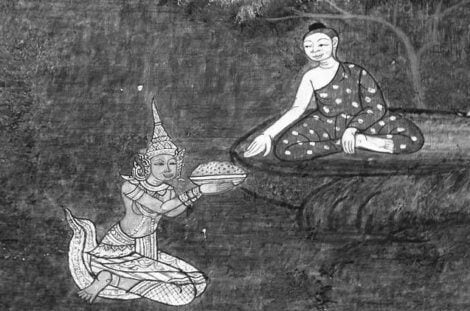
Sujata, a daughter of the landowner of the village Senani near Uruvela had once pledged that she would offer the milk-rice to the spirit of the tree if she gave birth to a son. As her wish was fulfilled she asked her maid Punna to visit the tree and prepare the place for offering. When Punna visited the place she saw Gotama sitting under the tree. She then mistook him to be the tree-deva and reported the matter to Sujata, who in a great joy reached the spot and offered him the milk-rice in a golden bowl.Gotama accepted the bowl; walked to the river-bank; bathed in the Suppatthita; and then ate the food. This was his only meal after the gap of forty-nine days.— Some say seven years.
More Sacred sites within the Mahabodhi Temple complex in Bodh Gaya
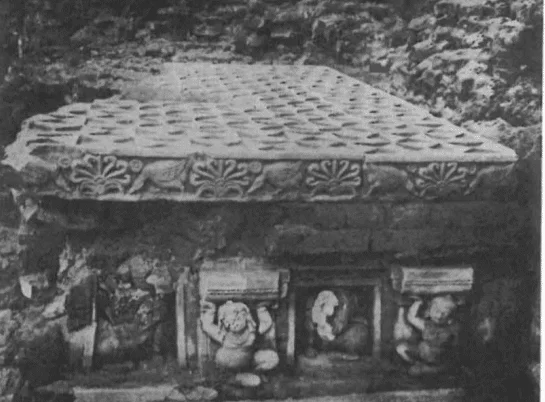
The Buddha after Enlightenment spent the succeeding seven weeks at seven different spots around the Bodhi tree and sat under two other trees in the vicinity; meditating and considering his experience. Several specific places at the current Mahabodhi Temple relate to the traditions surrounding these seven weeks.
They are connected by pathways and the whole complex is laid out with landscaped lawns, flowering trees and no plastic.
For one more week Buddha remained in meditation sitting on the platform behind the Bodhi tree. It is called ‘vajirasila’ (the rock of diamond) or ‘vijirasana’ (the diamond seat) and some Buddhists believe that an enormous diamond lay buried beneath the earth fuelling the site’s spiritual power.
The picture on the right. View of the Vajrasana when excavated in the 19th century. Leoshko Janice. Bodhgaya, the Site of Enlightenment. Marg Publications, 1988.
The Animesh Lochan Chaitya – Prayer Hall Bodhgaya
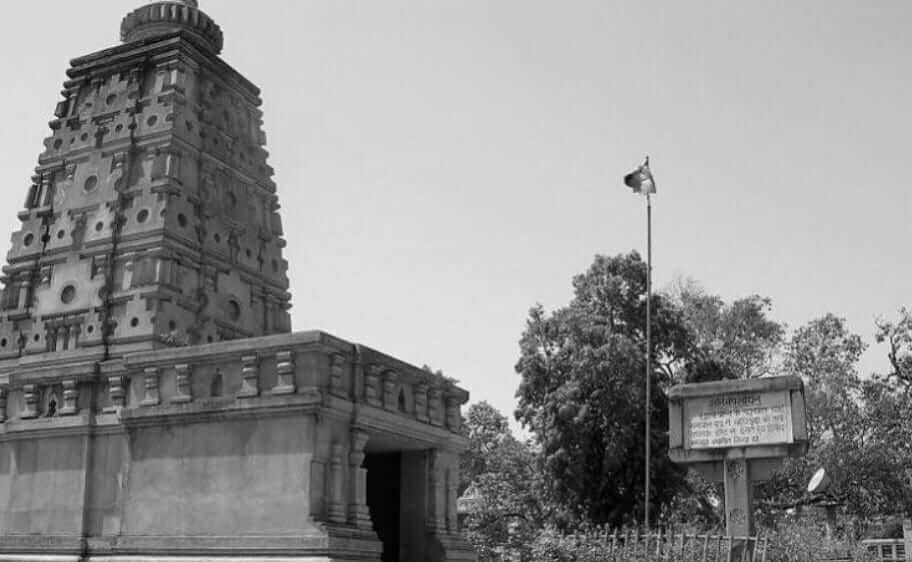
Animesh Lochan Chaitya, meaning ‘open eyes’ is about 50 meters at the north-east side of the Maha Bodhi Temple in a small hill. The stupa type temple with a Buddha image is also known as “Animisa Ceti” (Unblinking Shrine), to mark the place where Gotama Buddha spent the second week after enlightment, remained standing and gazing uninterruptedly to the Bodhitree. Animesh Lochan or Open Eyes is considered important as it teaches self control and focus.
Cankamana – Cloister Walk

The third week, the Buddha practiced a walking meditation (back and forth from the Bodhi tree to the Animisa Ceti temple) called Cankamana. It is said that lotus flowers emerged at every step of the Buddha. The spot denotes the footsteps of Buddha carved out as lotuses in Black stone. To symbolize this, an elevated structure with lotus flowers, known as ‘Ratanacankama Cetiya’ (jewel promenade shrine) was erected, on the floor, the carved lotuses from Asoka’s time remain.
Devotees sit around at the floor and chant various hymns from Buddhist teachings.
Ratanaghara – The Place of Basic Contemplation
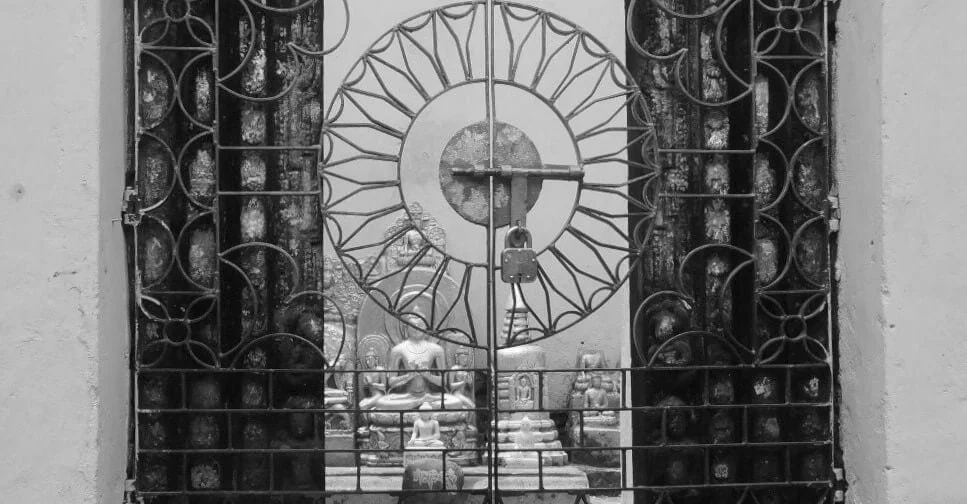
The 4th week, the Buddha meditated on the ‘Patthana’ or law of causality in the ‘Ratanaghara’ (Jewel house shrine) northwest the Bodhi tree. It is said that a ray of six colors, blue, yellow, red, white and orange have emanated from his body during this deep meditation. These colors are used in the present day Buddhist flag.
Ajapala Nigrodha Tree – Banyan Tree
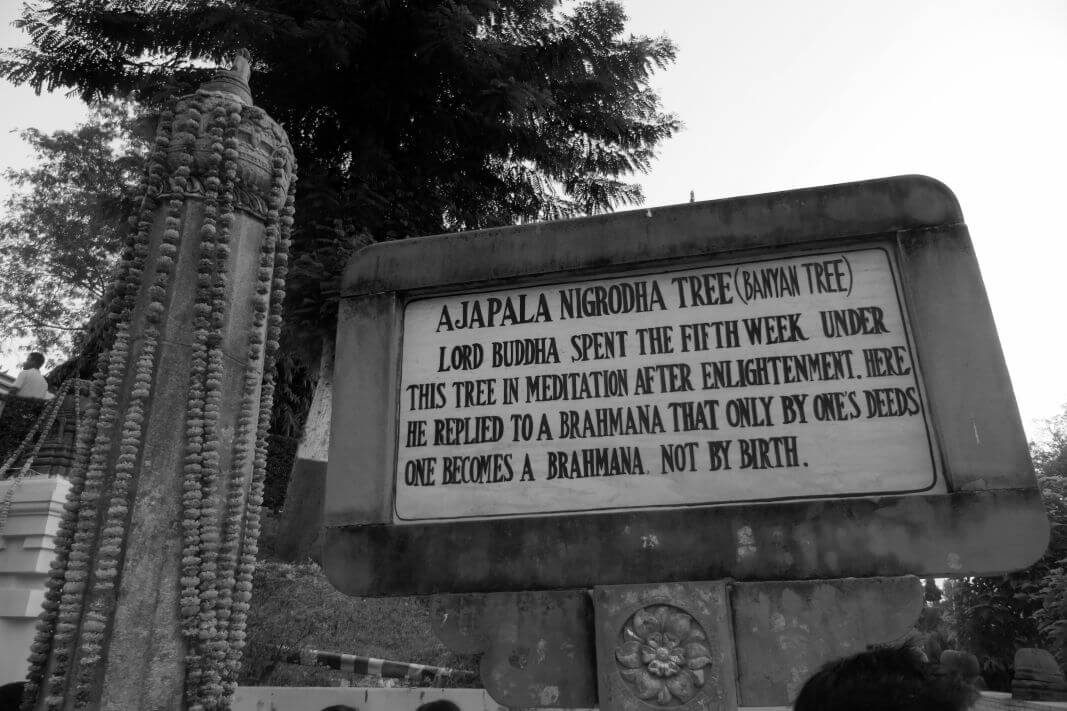
Near the entrance of the Mahabodhi temple, there is a pillar, which marks the place where the Buddha spent the 5th week in meditation under the Ajapala Nigrodha Banyan tree, not a Pipal tree.
It is also here that he replied to a Brahmana that only by ones deeds one becomes a Brahmana, not by birth. The place is mentioned by Fa Hian as one of the historic spots on which men raised towers and placed figures of Buddha.
Muchalinda Sarovar – The Abode of Snake King.

At the south-east of the temple is a pond (Muchalinda Sarovar) where Buddha spent the sixth week in meditation. While Buddha meditated, a violent storm broke out; The king of serpents named Muchalinda came out of his dwelling and stood up, protecting the Buddha with his hood. This anecdote is symbolized by an effigy of Buddha and Muchalinda situated in the middle of the pond; A gift from Burmese pilgrims.
It seems that the link with snakes proved to be enduring and it became one of the constant motifs in Buddhist iconography as it spread to South East Asia and East Asian countries.
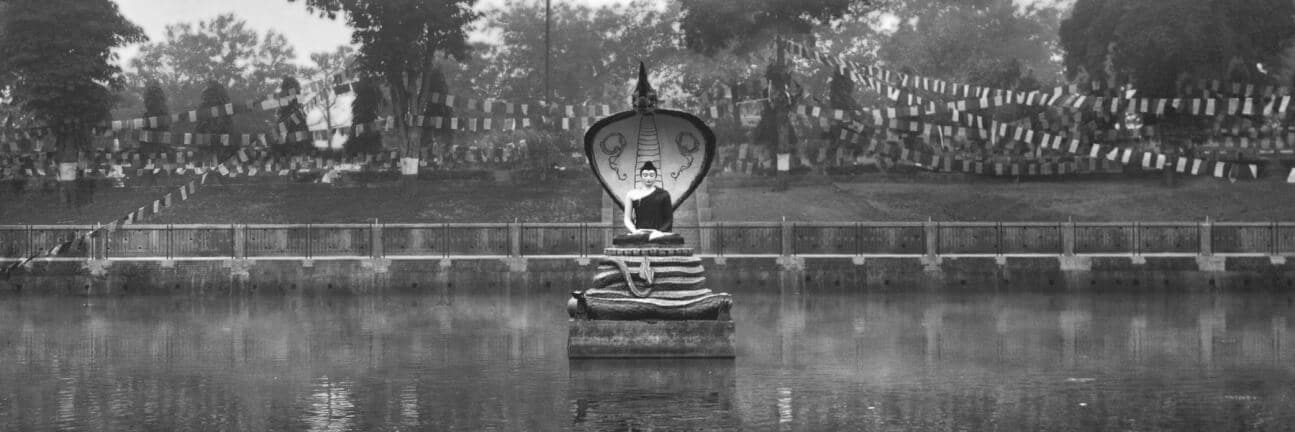
Rajayatna – A Kind of Forest Tree
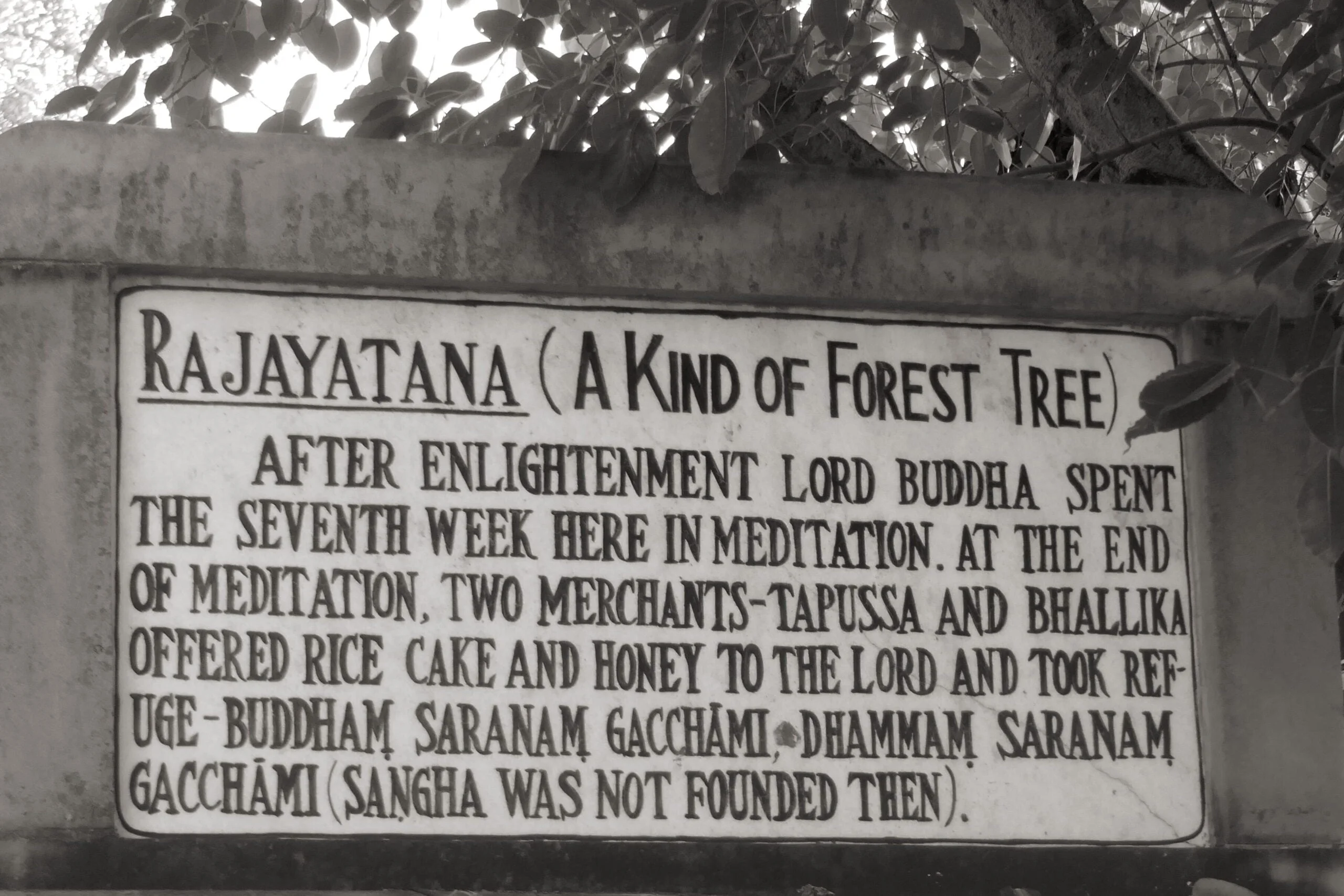
Buddha spent the 7th and last week of meditation under the Rajayatna tree, situated at the south of the temple. It is said that two Burmese merchants named Tapassu and Bhallika of Utkala came to offer rice cakes and honey to Buddha and became the first devotees of Buddha.
Note: Myanmar people believes the place Utkala or Okkala as Yangon, Myanmar and some says that it is Odissa, India.
The Buddha gave them sermons with two gems “Buddham saranam gacchami and Dhammam saranam gacchami” and eight strands of hairs, those hairs were enshrined as relics inside the Shwedagon Pagoda, Yangon.
As per another legend, Trapusha and Bhalluka, the two caravan merchants waited upon the newly enlightened master under this tree and presented him with “perched corn and honey”.
After crystallizing his thoughts following the revelations, he travelled to Saranath, near Varanasi, where he delivered his first sermon.
The Holy places of a Buddhist Pilgrimage
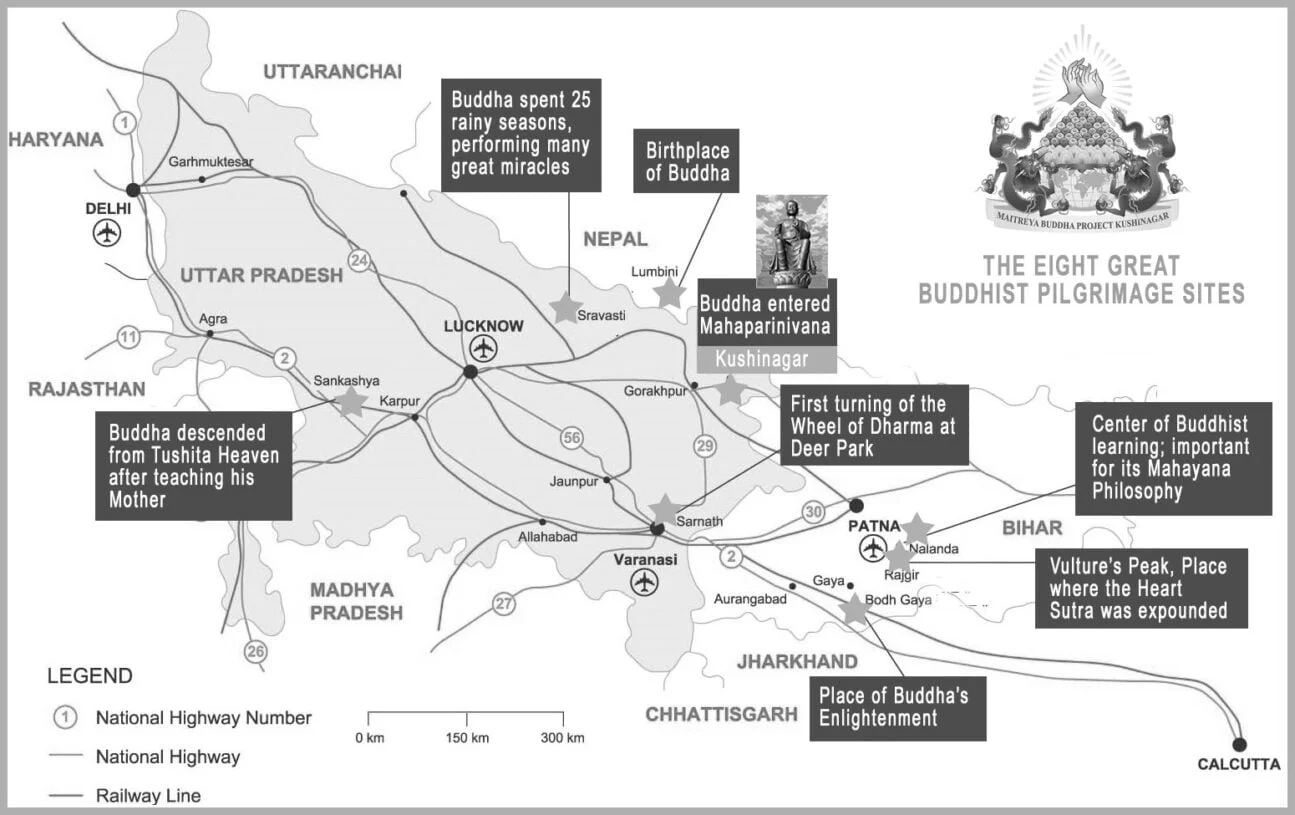
Buddhism emerged in the Gangeatic Plain and the Himalayan foothills in the fifth century B.C., spreading throughout much of India in the following several centuries and throughout the far reaches of south, central, and east Asia in the next millennium.
Pilgrimage formed an important part of Buddhist devotional practice from ancient times. The Rig Veda, a Brahmanical text composed in ~ 1200 B.C., refers to the spiritual benefits that could be acquired by undertaking a pilgrimage to holy sites.
In the Mahaparinibbana sutta, another early text, it is stated that the Buddha encouraged all devotees to make pilgrimages to four holy sites to ensure that they would be reborn in a heavenly world.
- Lumbini, his birthplace – 624 B.C.E.
- Bodhgaya, where he achieved enlightenment – 589 B.C.E
- Sarnath, where he preached his first sermon – 588 B.C.E.
- Kusinagara, where he achieved nirvana – 544 B.C.E
Among the great centers of Buddhism are also the Jaya Siri Maha Bodhi in Anuradhapura, the Shwedagin Pagoda in Yangon, Myanmar, the Sacred Tooth Relic Temple – the Dalada Mandiraya in Kandy Sri Lanka and Buddhas birthplace, Lumbini in Nepal, that continue to attract worshipers from the world.

~ ○ ~
Keep exploring:
Works Cited & Multimedia Sources
- Archaeological Gazetteer of Gaya District by Bijoy Kumar Choudhary and Abhishek Singh Amar; Publisher K.P.Jayaswal Research Institute, Patna.
- Archaeology of Early Buddhism. https://pastebin.com/8fRZSrCh
- Bhikkhuni Sanghamitta Bringing the Bodhi Tree Sapling to Sri Lanka. Photograph taken at the Sri Lankan Temple, Sentul, Kuala Lumpur, Malaysia in May 2011. https://snfwrenms.wordpress.com/tag/sentul/
- Bodhi tree. http://www.tibetanbuddhistencyclopedia.com/en/index.php?title=Bodhi_tree
- Faxian in India. http://factsanddetails.com/china/cat2/4sub8/entry-5447.html
- Gautama Buddha. https://encyclopediaofbuddhism.org/wiki/Gautama_Buddha
- Geary David. Destination enlightenment : buddhism and the global bazaar in Bodh Gaya, Bihar. 2009. https://open.library.ubc.ca/cIRcle/collections/ubctheses/24/items/1.0068498
- Gitu Giri. Lumbini Gandhakuti.
- Herold Andre Ferdinand.The Life of Buddha. 1922.http://www.sacred-texts.com/bud/lob/index.htm
- http://unesdoc.unesco.org/images/0022/002239/223986E.pdf
- https://en.wikipedia.org/wiki/Bodh_Gaya
- https://web.archive.org/web/20201202124450/https://ruchismultiverse.blog/2019/11/11/bodhgaya-the-centre-of-the-buddhist-world/
- https://web.archive.org/web/20201202124450/https://ruchismultiverse.blog/2019/11/11/bodhgaya-the-centre-of-the-buddhist-world/
- https://www.academia.edu/2097776/The_discovery_of_Lumbin%C4%AB
- https://www.academia.edu/27441817/Lumbini_World_Heritage
- https://www.academia.edu/3615128/Lumbini-The_birthplace_of_Lord_Buddha
- https://www.academia.edu/38264473/Several_Episodes_in_the_Recent_History_of_Lumbini.pdf
- https://www.academia.edu/5220422/Rediscovering_Lumbini_archaeology_and_Site_Interpretation
- Jataka and other stories of Budhha
- Leoshko Janice. Bodhgaya, the Site of Enlightenment. Marg Publications, 1988.
- Mukhopadhyaya Puma Chandra. Smith Vincent Arthur. A Report on a Tour of Explorations of the Antiquities in the Tarai. https://ia800201.us.archive.org/2/items/bub_gb_5iYXAAAAYAAJ/bub_gb_5iYXAAAAYAAJ.pdf
- Samrat Ashoka (Emperor Ashoka Maurya). https://www.importantindia.com/7156/samrat-ashoka/
- The Illustrated Jataka & Other Stories of the Buddha by C. B. Varm
- The travels of Fa-hien
